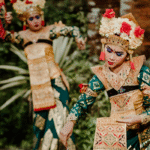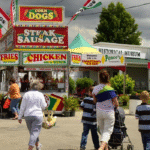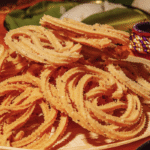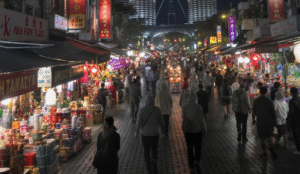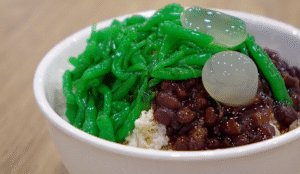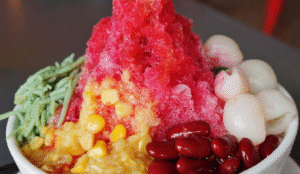Coffee Shops (Kopitiams) and Their Cultural Role in Malaysian Society
Walk into any Malaysian town or city—whether it’s George Town, Ipoh, or Kuala Lumpur—and you’re likely to find a kopitiam maitpokstling with morning chatter, clinking cups, and the aroma of strong, sweet coffee wafting through the air. In a country defined by its cultural diversity and rich culinary heritage, the humble coffee shop—especially the traditional kopitiam—holds a special place in the hearts of Malaysians.
Far from being just a place to get a caffeine fix, these establishments have become cornerstones of Malaysian daily life, reflecting generations of traditions, stories, and social interactions. In this article, we explore the history, evolution, and cultural role of coffee shops in Malaysia, with a deep dive into the heritage of traditional kopitiams in Malaysia, and why they remain as relevant today as they were decades ago.
Frequently Asked Questions (FAQ)
1. What is the difference between traditional kopitiams and modern coffee shops in Malaysia?
Traditional kopitiams are older-style coffee shops serving local brews and breakfast staples in a nostalgic setting. Modern cafés may incorporate Western brewing techniques and fusion food while drawing inspiration from the kopitiam aesthetic.
2. What kind of coffee is typically served in Malaysia coffee shops?
Most Malaysia coffee shops serve kopi made from robusta beans roasted with sugar and margarine. The coffee is strong, often sweetened with condensed milk or served black with sugar (kopi-O).
3. Are kopitiams only popular among older generations?
No. While they hold strong nostalgic value for older Malaysians, younger generations are increasingly revisiting and reviving coffee shops culture, either through modern business models or by rediscovering traditional flavors.
4. How did coffee shops become a cultural icon in Malaysia?
Coffee shops became cultural icons due to their role as communal gathering spots, their multicultural menus, and their history as social spaces that unite people across race, class, and religion.
5. Can tourists enjoy authentic Malaysia coffee experiences?
Absolutely. Cities like Ipoh, Penang, and Kuala Lumpur offer excellent coffee shops experiences for tourists. Many locals are also happy to recommend hidden gems that serve authentic kopi and local fare.
A Historical Brew: The Birth of Kopitiams in Malaysia
The story of Malaysia coffee and its kopitiam culture is intertwined with the country’s colonial past and immigrant communities. The word “kopitiam” itself comes from a blend of two languages—“kopi,” meaning coffee in Malay and Bahasa Indonesia (borrowed from Dutch), and “tiam,” which means shop in Hokkien, a Chinese dialect.
Kopitiams were first established by Hainanese immigrants in the early 20th century. Unlike earlier Chinese communities who took up roles in tin mining and trade, the Hainanese were often left to find niches within the domestic and hospitality sectors. Many became cooks, bartenders, and house servants for colonial families. When these roles phased out, they began opening small food and beverage businesses—including what would soon become Malaysia’s iconic coffee shops.
These early coffee shops weren’t flashy or trendy. They were simple corner shops with marble-topped tables, wooden stools, ceiling fans, and handwritten menus. But what they lacked in modern flair, they made up for in character and charm—and most importantly, community.
The Traditional Kopitiam Experience
Traditional kopitiams in Malaysia serve more than just coffee—they serve tradition. Walking into one feels like stepping back in time. The menu is often hand-scrawled on walls or printed in old-style fonts. The server—usually an older uncle or auntie—knows half the customers by name. The pace is unhurried, and the air is thick with nostalgia.
What’s on the Menu?
The staple of any kopitiam is, of course, the kopi—a local-style coffee that’s usually made from robusta beans roasted with margarine and sugar, giving it a deep, slightly smoky flavor. The result is a bold brew often served with condensed or evaporated milk.
Kopitiam-style coffee orders are practically a language of their own:
- Kopi – Coffee with sweetened condensed milk
- Kopi-O – Black coffee with sugar
- Kopi-C – Coffee with unsweetened evaporated milk
- Kopi-O Kosong – Black coffee, no sugar
- Kopi Peng – Iced coffee
But kopi is just the beginning. Most coffee shops offer classic local breakfasts like:
- Kaya toast: Crispy bread slathered with butter and kaya (coconut egg jam)
- Soft-boiled eggs: Served in a cup with light soy sauce and white pepper
- Nasi lemak, mee goreng, or chee cheong fun, depending on the region
This mix of coffee and comfort food has made traditional kopitiams a haven for early risers, retirees, students, and morning business meetings alike.
The Cultural Role of Malaysia Coffee Shops
The role of coffee shops in Malaysia goes far beyond what’s on the menu. These establishments serve as communal gathering points, where people from all walks of life meet, talk, and unwind.
1. The Morning Ritual
For many Malaysians, the day doesn’t start until they’ve had their kopi. Whether enjoyed solo with a newspaper or with a group of regulars, morning coffee at the coffee shops is a sacred ritual. It’s a time to catch up on the news, exchange gossip, discuss politics, or plan the day.
In small towns especially, the local coffee shop becomes the heart of the community. Everyone knows everyone. Discussions flow freely across tables, blurring the lines between social classes, ethnicities, and generations.
2. A Space for Multiculturalism
Malaysia is home to a diverse population—Malay, Chinese, Indian, and Indigenous communities all coexisting within a shared space. Nowhere is this diversity more evident than in the kopitiam.
While the traditional coffee shops may have Hainanese roots, its spirit is multicultural. You might see a Malay uncle drinking kopi next to a Chinese aunty enjoying toast, while an Indian worker grabs takeaway nasi lemak. The menu reflects this too—blending Chinese noodles, Malay dishes, and Indian-influenced snacks.
In a time when globalization and urbanization threaten to isolate people, kopitiams remain an enduring symbol of Malaysia’s cultural harmony.
3. The “Third Place”
Sociologists often refer to coffee shops as a society’s “third place”—a neutral space outside of home and work where social interaction thrives. In the Malaysian context, kopitiams perfectly embodies this concept. They are not just places to eat or drink, but places to bond, debate, reminisce, and create memories.
Kopitiams have been settings for first dates, family reunions, political debates, and old friends reconnecting after years apart. They are places where stories are brewed along with the coffee.
Kopitiams in Transition: Modern vs. Traditional
As Malaysia becomes increasingly urban and connected, the coffee shop scene has evolved too. New generations of Malaysians are bringing modern twists to the kopitiam experience.
Rise of the “Modern Coffee shops”
In cities like Kuala Lumpur, Johor Bahru, and Penang, you’ll now find modern coffee shops—air-conditioned cafés that borrow the aesthetics of traditional coffee shops while offering fusion dishes, WiFi, and a sleek menu.
These new-age establishments cater to a younger crowd and offer artisanal coffee alongside kaya toast, sometimes even blending Western and local ingredients into creative new offerings. Coffee is brewed with espresso machines, and you’ll hear English indie music in the background instead of the sounds of clinking saucers.
While these cafés represent an exciting evolution of Malaysia coffee culture, they also face the challenge of preserving authenticity. Many older Malaysians feel these spots don’t quite capture the “soul” of the old kopitiam.
Keeping Traditions Alive
Fortunately, many entrepreneurs and communities are actively working to preserve traditional coffee shops in Malaysia. Some families have operated the same shop for three or even four generations. Others are renovating old coffee shops while keeping the classic menu and atmosphere intact.
There’s also a renewed appreciation among younger Malaysians for heritage—leading to a nostalgic revival of kopitiams that celebrate history while gently modernizing operations
Coffee Culture Across the Regions
Different parts of Malaysia offer unique kopitiam cultures that reflect local identity:
Penang
Known for its vibrant street food scene, Penang’s coffee shops are as famous as its char kway teow. These shops often serve classic Hokkien-style dishes, and the coffee tends to be strong and bitter—a reflection of the island’s robust flavors.
Ipoh
Often considered the birthplace of white coffee, Ipoh’s old-town coffee shops like Nam Heong and Sin Yoon Loong are legendary. White coffee is made from beans roasted in margarine and served with condensed milk, producing a rich, smooth brew with a caramel tone. A trip to Ipoh isn’t complete without sipping Malaysia coffee in one of these iconic spots.
Kuala Lumpur
In KL, kopitiams are both nostalgic hideaways and hipster hangouts. You’ll find traditional joints in neighborhoods like Petaling Street and Kampung Baru, as well as contemporary versions in Bangsar or Mont Kiara offering oat milk kopi and sourdough kaya toast.
East Malaysia (Sabah & Sarawak)
Coffee shops in Sabah and Sarawak integrate Indigenous flavors and local produce. For instance, Tenom coffee in Sabah is popular for its earthy taste, often served in small-town coffee shops that double as social hubs for farmers and traders.
Coffee as Cultural Legacy
Over the years,Malaysia coffee has moved beyond the kopitiam. Local brands like OldTown White Coffee have gone international, exporting the idea of the Malaysian kopitiam to countries like China, Singapore, and Australia.
Instant coffee sachets branded as “kopi putih” or “kopi-O” are now household staples, offering a taste of the kopitiam at home. Coffee-flavored ice cream, cookies, and cakes inspired by local brews have also become popular.
But no matter how far the concept travels, the essence of coffee shops in Malaysia remains rooted in community, storytelling, and identity.
The Future of Malaysia Coffee Shops
As more Malaysians seek experiences that combine authenticity and innovation, the future of Malaysia coffee shops looks promising. The growing interest in heritage preservation, sustainable business practices, and artisanal brewing has led to a kopitiam renaissance.
More coffee shops are embracing:
- Locally sourced ingredients
- Barista-level brewing with traditional flavors
- Green packaging and eco-conscious design
- Cultural storytelling in branding
There’s even talk of digitizing coffee shops—letting regulars pre-order online, review dishes on apps, or join loyalty programs that celebrate frequent visits.
In essence, while the format may change, the spirit of kopitiams will endure. They will continue to be places where the nation’s identity percolates over a hot cup of coffee.
Conclusion: More Than Just a Cup
The story of Malaysia coffee and its shops is not merely about beverages or food. It’s about belonging—to a place, a memory, a shared culture.
In every sip of kopi, there’s a taste of history. In every table wiped clean for the next customer, there’s a quiet respect for the generations who came before. And in every coffee shops—whether old or new—there’s a heartbeat that echoes with the laughter, debates, and stories of the Malaysian people.
So the next time you sit down for a cup of coffee in a coffee shops, take a moment to soak it all in. Because you’re not just drinking Malaysia’s favorite brew—you’re participating in one of the country’s most cherished cultural rituals.
Posts you might be interested
-
 Traditional Dance of Malaysia/0 Comments
Traditional Dance of Malaysia/0 Comments -

-

